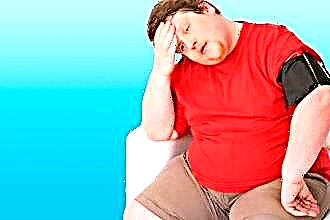Rhythm and conduction disturbances belong to the characteristic signs of cardiovascular pathology. The appearance of sensations of interruptions in the work of the heart, increased heartbeat and fading are the basic symptoms of arrhythmias. The degree and type of disorder determines further hemodynamic changes, since not all rhythm disturbances require medical or surgical correction. Extrasystole is one of the most common phenomena that occur even in healthy people. A serious degree of pathology of excitability of the heart requires the use of special drugs to prevent complications, including antiarrhythmic ones.
What drugs are used for extrasystole
Extrasystole is called an extraordinary formation of an impulse from a sinus node or other ectopic focus. The occurrence of the phenomenon is associated with increased activity of secondary sources of signals and a weakening of the normal pacemaker (after a heart attack, myocarditis, with side effects from the use of glycosides).
In healthy people, up to 100 extrasystoles are recorded during the day, which do not affect the functioning of the cardiovascular system and do not worsen the quality of life.
Antiarrhythmic drugs (AAP) with extrasystole are prescribed taking into account the characteristics of the focus of pathological excitement. Depending on the source of the impulse, supraventricular (atrial and atrioventricular) and ventricular extrasystoles are divided. There are special classes of antiarrhythmic drugs for the treatment of violations of the electrical activity of the heart muscle:
- Ia - inhibiting signal conduction ("Quinidine", "Ritmilen"). They are used to eliminate pathological impulses from all parts of the cardiac conduction system.
- IV - "Lidocaine", "Maxarithm". Have a selective effect on ventricular arrhythmias.
- Іс - "Etatsizin", "Propanorm". Affect all parts of the cardiac conduction system by lengthening the pulse transit time and a minimal effect on the recovery time of the myocardium. They are used to treat atrial fibrillation.
- II - beta-blockers "Nebivolol", "Concor", "Carvedilol". Drugs that have a hypotensive, antiarrhythmic, antifibrillatory effect with a predominant effect on the AV node.
- III - "Amiodarone", "Cordaron". Drugs that block the transport of potassium through its channels. Used to treat arrhythmias of various origins.
- IV - drugs that slow down the conduction of the impulse from the atrium to the ventricles ("Verapamil", "Diltiazem").
The presence of clinical indications requires a combination of various drugs for extrasystole. The most common associations are:
- ІІ + Іа class;
- II + "Kordaron";
- "Kordaron" + "Ritmilen";
- "Kordaron" + "Propanorm";
- "Verapamil" + Ia (Ib);
- II + "Propanorm".
When to start treatment
Registration on the electrocardiogram of extraordinary contractions of the myocardium is not always an indication for pharmacological correction of arrhythmia. Patients, as a rule, tolerate extrasystole well, which does not cause hemodynamic disturbances (especially supraventricular). Prescribe drugs taking into account the patient's comorbidities, the presence of an organic heart defect and general well-being.
The main indications for the treatment of extrasystole with antiarrhythmic drugs:
- progressive course of pathology (in dynamics there is an increase in the number of extrasystoles);
- high class of ventricular extrasystoles (IVA, IVB, V according to Lown) - the need for therapy is dictated by a high risk of developing malignant tachycardia and ventricular fibrillation;
- the presence of more than 2 extraordinary contractions (allorhythmia, "short runs"), which are accompanied by signs of circulatory failure - lability of blood pressure, edema, dizziness, changes in the properties of the pulse.
Supraventricular extrasystole is treated with drugs only if there are clear clinical indications. In other cases, the correction is carried out by modifying the lifestyle and eliminating the etiological factor. The drug, its dose, frequency and duration of admission is established by the cardiologist, observing and controlling the electrophysiological parameters of the patient.
Performance criteria
Control the adequacy of the selection of AAP for the treatment of extrasystole according to the Giace criteria:
- an overall decrease in the number of extraordinary reductions by 70%;
- reducing the number of paired extrasystoles by 90%;
- absence of attacks of ventricular tachycardia.
Practicing cardiologists believe that the main criterion for the effectiveness of therapy is the improvement of the patient's condition.
Contraindications and side effects
The widespread prescription of drugs for arrhythmias is accompanied by a high risk of side effects. The mechanism of action of the agent determines the contraindications and the main side effects.
- Beta-blockers are contraindicated in patients with aortic stenosis, bradycardia, diabetes mellitus, bronchial asthma and arterial hypotension. The use of drugs in this group can cause a decrease in blood pressure, bronchospasm, weakness, impaired sensitivity, headaches and an increase in blood glucose levels.
- "Amiodarone", according to the instructions, is contraindicated in patients with impaired atrioventricular conduction, sick sinus syndrome and bradycardia. Side effects of the drug: severe hypotension, collapse and decreased heart rate.
- "Verapamil" is not prescribed for patients in the acute stage of myocardial infarction, with atrioventricular blockade and severe heart failure.
- "Propanorm" is contraindicated in blockages, uncontrolled chronic heart failure, left ventricular systolic dysfunction, electrolyte imbalance and broncho-obstructive diseases.
The use of antiarrhythmics in case of extrasystole requires additional therapy with potassium preparations (Panangin, Asparkam).
Conclusions
Supraventricular extrasystoles belong to safe arrhythmias that do not pose a threat to human life. In most cases, the onset of the episode is associated with the activation of the sympathoadrenal system and is corrected with sedatives. Ventricular disorders of high Lown classes are accompanied by the risk of developing fatal arrhythmias, therefore, require pharmacological therapy. Adequately selected medicine for extrasystole and its regular intake provide an improvement in the quality and longevity of the patient.



